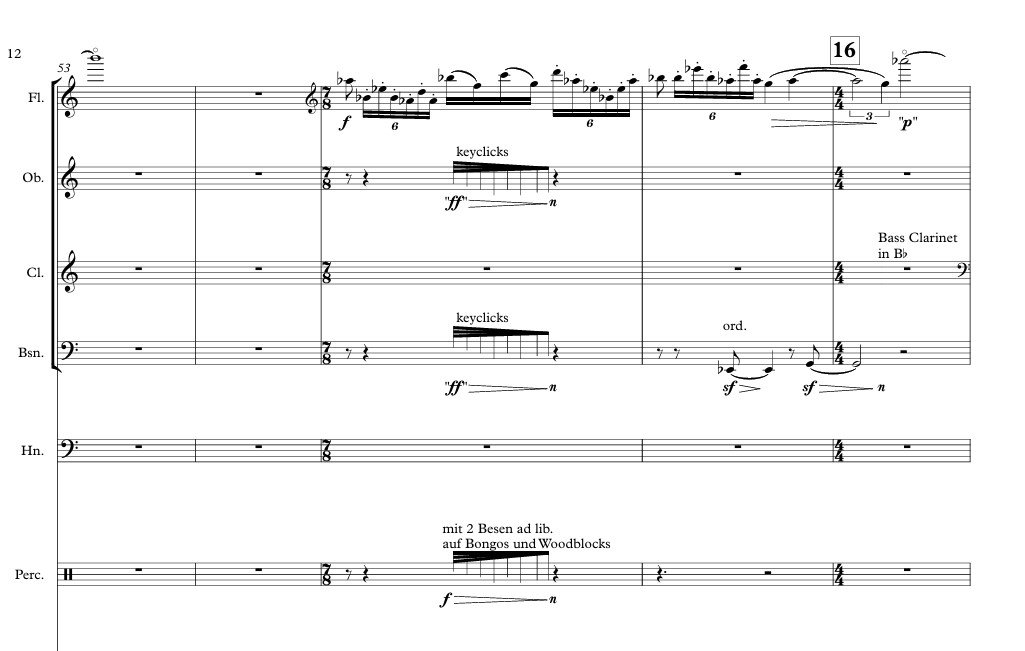Now let’s get on to the next part
Specifically the little segments with the roman numerals I, II, and III
The following sketch was the groundwork for this part. Taking the idea of stacking 4ths and developing them more vertically, note by note until they culminate in a high point of the crescendo, as well as taking other gestures and developing them further.
For the following segment I made a little summary:
Those two score reductions summarize the tonal content of the whole next few minutes in the piece.
Upper harmonic structure and bass notes. You will notice that the bass notes don’t seem to “belong” to the upper structure. It was purely an aesthetic choice to broaden the general soundscape with pitches that would only appear when you kept on stacking 4th for a while.
Right at the end of the first big segment everyone but the violas stop playing.
It starts with the D (as seen in the sketch above), followed by the 2nd violin and then they start intertwining their voices for a more homogeneous sound.
Once they reach the end of the gesture, the other instruments (Cello, Double Bass, Horn, Bassoon, Harp and percussion), taking the same idea of developing tonal material from (somewhat) non-tonal material from the previous part, play their own gesture. Like waves crashing into each other after a build up.
Though two new elements are introduced:
First this rhythmic “irregularity” is taken straight from the final part of the piece (IV Fire), which will mostly involve 7/16 bars. Thus building a … probably more metaphorical … bridge between the two parts, as I don’t think it is noticeable to the audience. But who knows … maybe someone will notice and tell me about it afterwards.
And secondly, flourishing solos. Played mostly by the flute, which is later joined by the violin in antiphony, at the same time the 7/8 bars appear (but not exclusively)
The tonal material, once again, mostly based on 4ths
You can also see more of the “crashing waves” sounds in the percussion, bassoon and oboe and down below in the celli and double basses.
This part is special because it also pertains a tonal shift down by a minor second in all the upper harmonic structure as you can see in the 3rd bar in the picture below. This tonally will stay till the end of this whole segment.
Here is an example of a violin solo, copying the gestures of the flute.
The Flute picks up the melody and continues, but also emulates the harmonic glissando of the violin, which goes to an unspecified extremely high pitch on the E string.
The same process repeats, basically just working with the material that is given.
Flourishing melodies using 4ths and minor seconds
Horizontally built up chords made up of 4ths
“Crashing waves” gestures in the lower instruments going from non-tonal to tonal
The climax of this section ends on a high C in the flutes, whilst the strings play a sforzando chord (Fm 7,maj7, 9, 13).
Not to be confused: the top 7/8 bar is the same as the 7/8 bar in the bottom picture. Showcasing once again the intertwined melodies of violin and flute.
That is the end of the first segment of the first part (getting a bit convoluted here). Next is the second half of the first part which will still work with the element of non-tonal to tonal change but introduces a very different gesture on top of it.














